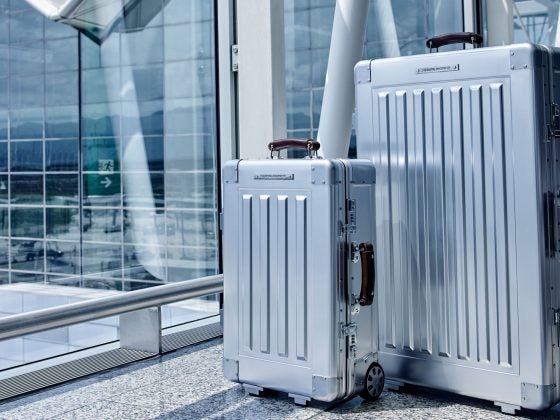Understanding Virtual Bank Cards: The Future of Secure Payments
Virtual bank cards are becoming increasingly popular as a secure and convenient payment method. These digital cards are linked to your existing bank account or credit card, allowing you to make purchases online or in-person without exposing your primary account information.
One of the key benefits of virtual bank cards is the enhanced security they provide. Since the card number, expiration date, and CVV are unique to the virtual card, your actual financial details remain protected even if the virtual card information is compromised. This helps to mitigate the risk of fraud and identity theft.
Virtual cards also offer greater control and flexibility. You can easily generate new virtual card numbers for specific merchants or transactions, and many platforms allow you to set spending limits or temporarily disable the card as needed. This level of customization can be especially useful for online shopping, recurring payments, or when making purchases from unfamiliar vendors.
As digital payments continue to evolve, virtual bank cards are poised to play a significant role in the future of secure and convenient transactions. By providing an additional layer of protection for your financial information, virtual cards can give you greater peace of mind and control over your payment experiences.
The Benefits of Using Virtual Cards for Travel Payments
When it comes to making payments during travel, virtual cards offer a range of benefits that can enhance your overall experience. These digital payment options provide increased security, convenience, and protection against fraud – key considerations for any savvy traveler.
One of the primary advantages of virtual cards is the enhanced security they offer. Unlike physical credit or debit cards that can be lost or stolen, virtual card numbers are digital-only, reducing the risk of unauthorized access to your primary payment accounts. This added layer of protection can give you greater peace of mind as you navigate your travels.
In addition to improved security, virtual cards also bring a new level of convenience to travel payments. With the ability to generate unlimited virtual card numbers, you can create unique identifiers for each transaction, merchant, or even trip. This allows you to compartmentalize your spending and monitor your finances more effectively.
Virtual cards also provide an extra level of fraud protection. Should one of your virtual card numbers become compromised, the impact is limited to that specific card, rather than exposing your entire payment portfolio. This can be especially useful when making purchases from unfamiliar merchants or in regions with higher rates of financial crime.
By leveraging the benefits of virtual cards, savvy travelers can streamline their payment processes, enhance security, and enjoy greater control over their finances – all of which can contribute to a smoother, more enjoyable travel experience.
How Virtual Cards Work: The Technology Behind Secure Payments
Virtual card technology offers a secure and convenient way to make payments online. The key to virtual cards is the use of tokenized payment information, which replaces your actual card details with a unique digital identifier.
When you use a virtual card, your real credit or debit card number is not shared with the merchant. Instead, the virtual card number, expiration date, and security code are generated and used for the transaction. This tokenized payment information helps protect your financial data from potential theft or misuse.
Virtual cards often leverage EMV chip technology and NFC (near-field communication) to enhance security. The dynamic nature of the virtual card details makes them useless to fraudsters even if your information is compromised. Websites like Linkpay.io make it easy to generate virtual cards for online purchases.
Overall, virtual cards provide an extra layer of protection for your finances when shopping on the web. The technology behind them ensures your real payment credentials remain safe and secure.
Comparing Virtual Cards to Traditional Payment Methods for Travel
When it comes to making payments while traveling, virtual cards are becoming an increasingly popular option compared to traditional payment methods like physical credit/debit cards and cash. Virtual cards offer several benefits that make them a convenient choice for travelers.
Unlike physical cards, virtual cards are digital-only and exist solely within your mobile wallet or online account. This eliminates the risk of losing or having your physical card stolen while on the trip. Virtual cards also allow for more control and flexibility, as you can easily generate new card numbers for each transaction.
Compared to carrying around cash, virtual cards provide more security and traceability of your spending. There’s no risk of losing cash or having it stolen. Virtual card transactions are also typically easier to track and categorize in your financial records.
Mobile wallets that integrate virtual card technology can be even more convenient than physical cards for travel. You can simply tap your phone to pay, without having to dig out your physical wallet. This makes virtual cards a seamless option for on-the-go purchases during your trip.
Overall, virtual cards offer travelers a secure, flexible, and convenient payment method that can simplify the financial aspects of their journeys. As the use of digital payments continues to grow, virtual cards are poised to become an increasingly common choice for the modern traveler.
Protecting Your Finances: Virtual Card Security Features for Travelers
When traveling, it’s crucial to safeguard your financial information. Virtual cards offer enhanced security features that can give you peace of mind on the go. Here’s a look at some of the key security measures provided by virtual cards for travelers:
Card Number Encryption: Virtual card numbers are randomly generated and encrypted, making them much more secure than traditional physical cards. This helps prevent unauthorized access and fraudulent transactions.
Transaction Monitoring: Many virtual card providers offer real-time transaction monitoring and alerts. This allows you to quickly identify and address any suspicious activity on your account.
Lost Card Protection: If your virtual card is lost or stolen, you can easily cancel it and request a replacement without the risk of unauthorized charges.
Travel Fraud Prevention: Virtual cards are designed with travel in mind, incorporating security features that help detect and block fraudulent activities often associated with travel purchases.
By leveraging the security advantages of virtual cards, you can focus on enjoying your travels without worrying about the safety of your finances. Consider incorporating virtual card technology into your travel payment strategy for enhanced protection.

















